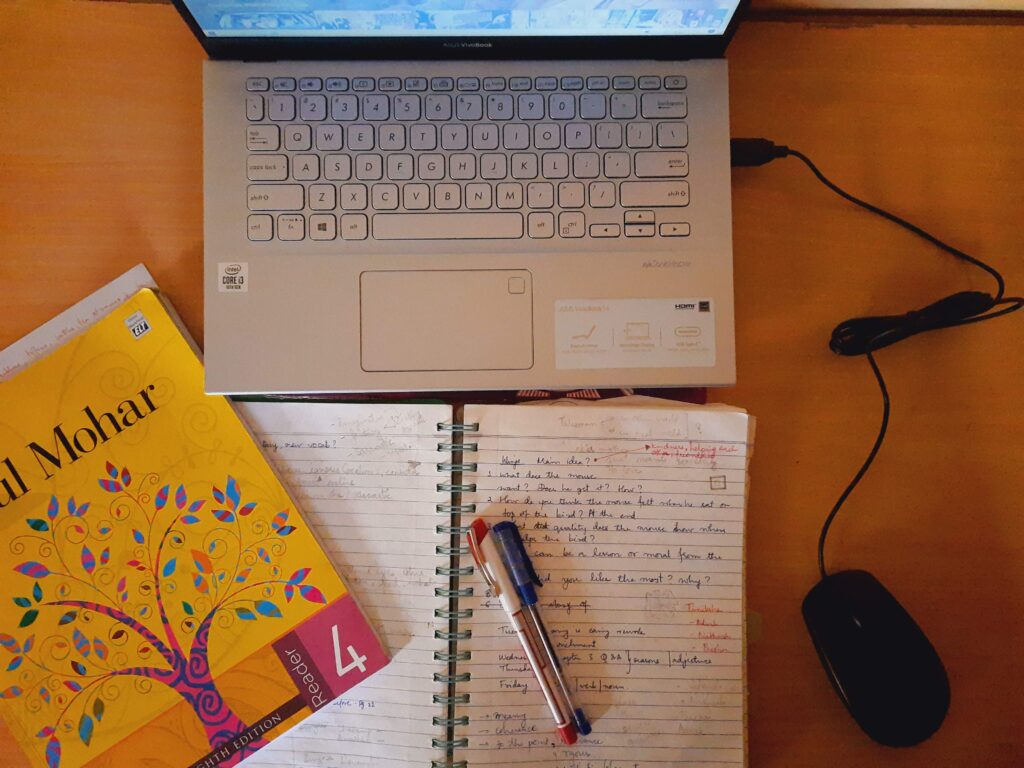Teaching in the time of a pandemic
By Deepa Parameswaran
It’s 9AM. I open all the tabs I need – Grade 4 Google classroom, a PowerPoint presentation on summary writing, and click on ‘Start Meeting’. In a few minutes, the entry and exit chimes would begin, two-dimensional students and I would learn, laugh, discuss and question, and reminders for assignments, and promises to submit would be made.
This has been the school routine for teachers and students in the year of the pandemic.
Exactly about a year ago, most parts of the world went into a complete lockdown owing to the Covid-19 pandemic. As doors closed, Windows opened. Most schools quickly adapted to alternate, online tools and methodologies of teaching and learning, introducing into our daily vocabulary words like ‘classroom stream’, ‘google docs’, ‘google form’, ‘unmute’. Persistent questions and requests such as ‘are you there?’, ‘can you hear me?’, ‘please turn on your video’ and ‘please type in the chat’ became increasingly commonplace. A year has passed, and it’s lasting effects are intangibly visible in the exhausted eyes of the student and teacher.
As a language teacher who was meeting her students for the first time, coupled with the intricacies of technology, the first few weeks were wrapped in anxiety and confusion. However, I quickly realized that the need to reinvent and innovate superseded the need to establish consistency. The students were already limited to a space in front of the screen, with the mundane act of viewing and clicking. The lack of natural interaction and lack of a sense of connectivity through proximity also gave rise to a sense of mundane.
And thus began a season of experimentation – experimenting with ‘Breakout rooms’, live crossword puzzles, live quizzes, word games, student-led book talks, poetry reading, video sharing, different means of presenting assignments, different means of assessing – all without compromising rigour, relevance and reflection. Some days would begin with motivation and zeal, and some days would begin with a state of exhaustion and sickness. Some days would be filled with chaotic laughter and conversation, and some would dwindle to a seemingly deafening silence. Some days would end with a thoughtful smile on my face, and some would end with deep dejection.
Given a choice between taking classes from the comfort of my home and the challenge of being physically present in a classroom, I would pick a physical classroom any day. It seems even absurd to associate the word ‘physical’ as an adjective of clarity for ‘classroom’; what is a classroom even without the hustle and joy of looking into children’s eyes?
As the academic year comes to a close, I ponder over the year gone by. I yearn longingly for classrooms filled with desks, students and chaos. I yearn for the comfort in sitting next to a child, and having a conversation. I yearn for the beauty of the interaction that lies at the crux of teaching, learning and growing.

